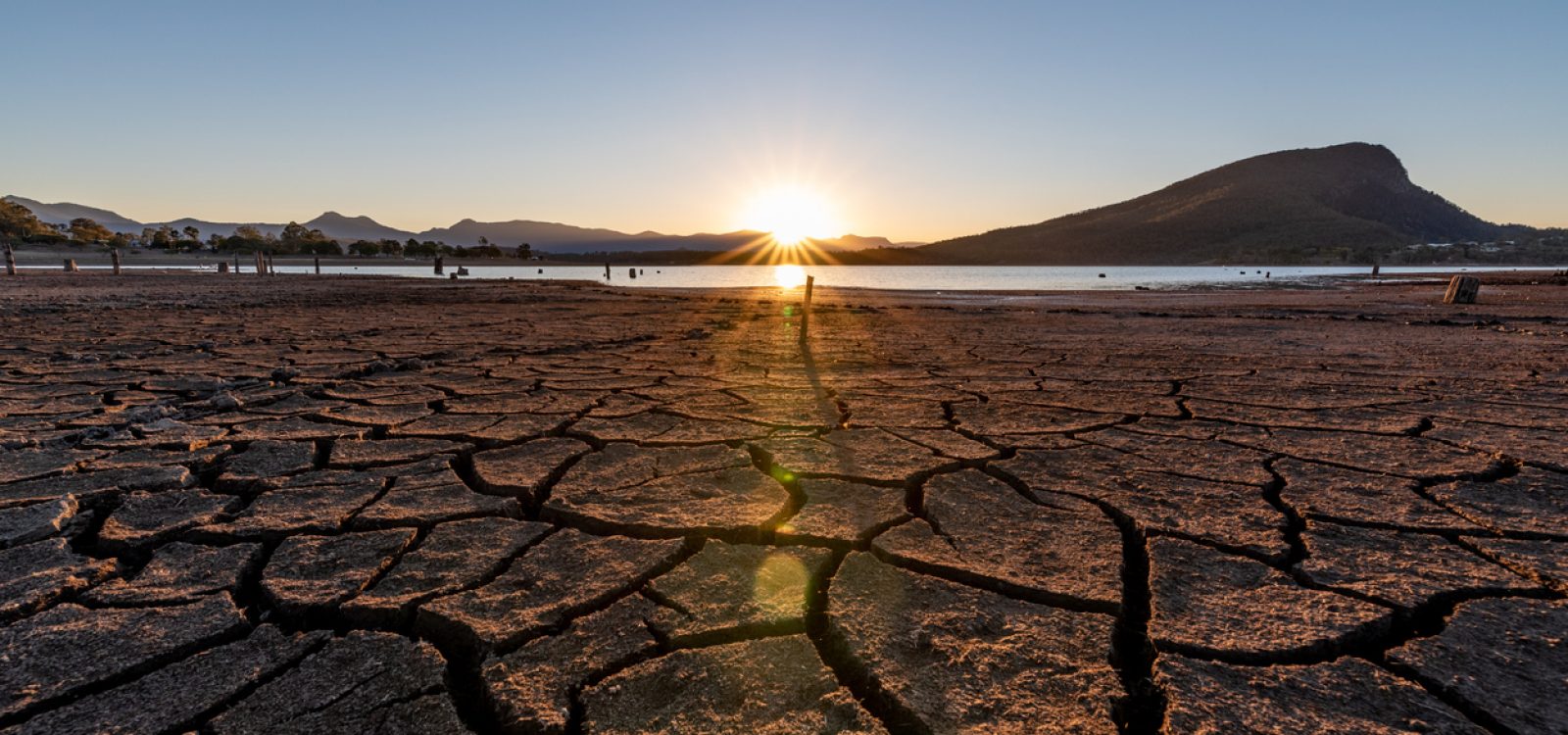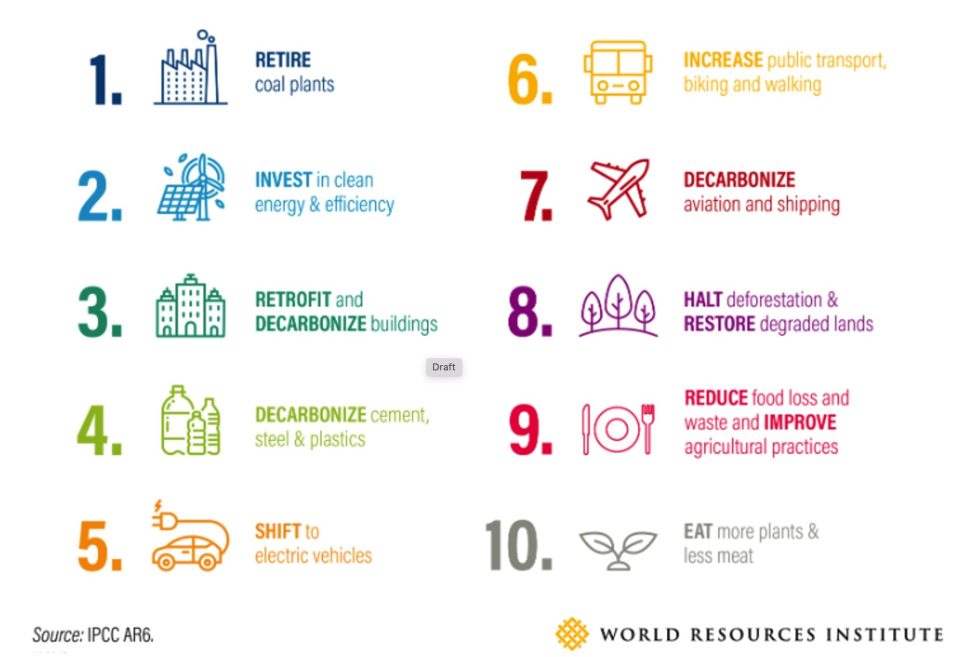
Intergovernmental panel on climate change (IPCC): Synthesis report
The recently published IPCC Synthesis Report demonstrates the scientific consensus about the urgency of the climate crisis and the need for near-term action.
It is the final report of the IPCC sixth assessment report (IPCC6), summarising the past seven years of scientific, technical and socio-economic information concerning climate change produced by hundreds of scientists around the world[1].
The Synthesis Report includes ten key findings[2]:
1.) Human-induced global warming of 1.1 degrees C has spurred changes to the Earth’s climate that are unprecedented in recent human history.
These changes include glacial retreats unmatched in over 2,000 years, sea level rising faster than any previous century in 3,000 years, last decade warmer than any period for 125,000 years.Additional warming will increase the magnitude of these concerns.
2.) Climate impacts on people and ecosystems are more widespread and severe than expected, and future risks will escalate rapidly with every fraction of a degree of warming.
Adverse climate impacts are more far-reaching and extreme than previously anticipated. About half the global population contend with severe water scarcity for at least a month per year and higher temperatures increase the spread of diseases such as malaria. Climate change has also slowed agricultural productivity improvements e.g., crop productivity growth in Africa has shrunk by a third since 1961. Since 2008 extreme floods and storms have forced over 20 million people from their homes every year.
Even limiting global warming to 1.5oC does not guarantee safety, as at this level of warming, 950 million people will be subjected to water and heat stress.
3.) Adaptation measures can effectively build resilience, but more finance is needed to scale solutions.
At least 170 countries are considering adaptation measures, but often progress from planning to implementation is slow. Building resilience measures are often small-scale, reactive and focused on near-term risks. This is often due to limited financing, especially in developing countries. But proven and readily available adaptation solutions can build resilience while delivering broader sustainability benefits.
4.) Some climate impacts are already so severe they cannot be adapted to, leading to losses and damages.
Globally, vulnerable people are struggling to adapt to climate impacts. In some cases, the limitations are ‘soft’ due to economic, political or social obstacles. In other cases, the adaptation limits are becoming ‘hard’ with climate change impacts becoming so frequent and severe that existing adaptation strategies cannot fully avoid losses and damages, e.g., rising sea temperatures affecting coral reef systems and associated livelihood and food security, and rising sea levels affecting habitation. Urgent action is needed to address the resulting losses and damages. COP27 saw some agreement to funding arrangements, but this needs to be actioned.
5.) Global greenhouse gas (GHG) emissions peak before 2025 in 1.5oC-aligned pathways.
The IPCC believes there is more than a 50% chance that 1.5oC global warming will be reached or passed by 2040 or 2037 under a high-emissions pathway. Under this latter pathway, global warming could reach 3.3oC to 5.7oC by 2100. Such global temperature levels last occurred over 3 million years ago. Limiting global warming to 1.5oC requires deep GHG emission reductions in the near term. To achieve this, GHG emissions must have peaked now or before 2025 at the latest, with subsequent rapid declines, 43% by 2030, and 60% by 2035 (relative to 2019 levels). While there has been some reduction in the growth of emissions from the 2000-2009 decade to the 2010-2019 decade (2.1% growth falling to 1.3%), this is way below the reductions needed. Even if countries achieved their climate pledges (nationally determined contributions (NDCs)) the GHG emission reduction would be 7% by 2030, rather than the 43% needed.
6.) The world must rapidly shift away from burning fossil fuels – the number one cause of the climate crisis.
To limit global warming to 1.5oC with no or limited overshoot, a maximum of net 510 GtCO2 (gigatonnes of equivalent CO2) can be emitted prior to reaching net zero in the early 2050s. But future emissions from existing and planned fossil fuel infrastructure alone could exceed this by 340, reaching 850 GtCO2. Strategies to avoid locking in these excess emissions include retiring existing fossil fuel infrastructure, cancelling new projects and retrofitting carbon capture and storage (CCS) technologies to existing power plants. At the same time scaling up renewable energy sources, e.g., wind and solar are now both generally cheaper than fossil fuels. Pathways to achieve 1.5oC limited warming require, by 2050, 95% reduction in coal use, 60% in oil and 45% in gas, combined with abatement technologies such as CCS.
7.) We need urgent, systemwide transformations to secure a net-zero, climate-resilient future.
While fossil fuels are the number one source of GHG emissions, deep cuts are needed across society to limit emissions. Power generation, buildings, industry, and transport account for nearly 80% of emissions, with agriculture, forestry, and land usage accounting for the balance. For example, the transport system requires planning to minimise the need for travel, building shared and public transport, increasing the supply and affordability of electric private and commercial vehicles and buses. This needs to be supported by widespread rapid-charging infrastructure and zero-carbon fuels for shipping and aviation. Policy measures can help drive necessary transitions such as subsidising zero-carbon technologies and taxing high-emission technologies, e.g., fossil fuel vehicles.

8.) Carbon removal is now essential to limit global temperature rise to 1.5oC.
Pathways that limit warming to 1.5oC, with nil or limited overshoot, depend on some degree of carbon removal. This could be by way of natural solutions such as sequestering and storing carbon in trees and soil, e.g., afforestation, as well as new technologies that pull CO2 from the air. An example of a technological solution is carbon mineralisation which uses reactive minerals in rocks to chemically bind with and store CO2 as a solid. All carbon removal has plusses and minuses. Reforestation, for example, is a relatively low-cost strategy offering benefits to communities, but may be subject to wildfires increasing the possibility of r further warming. It can also displace croplands, increasing risks to food security.
9.) Climate finance for both mitigation and adaptation must increase dramatically this decade.
Public and private finance supporting fossil fuels far exceed funds directed towards climate mitigation and adaptation. While climate finance has increased 60% since IPCC5 (2014) it will need to increase between 3 and 6 times by 2030 to achieve mitigation alone. Funding needs to increase most for hard-pressed developing countries and funding needs to increase sixfold for South East Asia and developing Pacific nations, fivefold for Africa and fourteenfold in the Middle East. This is needed by 2030 just to hold warming to 2oC. Finance for adaptation, and loss and damage, also needs to rise dramatically. Developing countries need US$127bn per year by 2030 and US$295bn per year by 2050. Current funding for adaptation falls well short of what is needed, being estimated as totalling less than US$50bn per year.
10.) Climate change – as well as our collective efforts to adapt to and mitigate it – will exacerbate inequality should we fail to ensure a just transition.
Households with income in the top 10%, largely in developed countries, emit around 45% of the world’s GHGs, while families in the bottom 505 of income emit up to 15%. Yet the effects of climate change most impact the poorer and more marginalised communities. Climate change mitigations can exacerbate inequality, e.g. retiring coal-fired power stations can displace workers; halting deforestation can heighten poverty and intensify food insecurity. The IPCC identifies measures supporting a just transition, e.g. social protection programmes (cash transfers, public works programmes, social safety nets) can support adaptation and reduce communities vulnerability to both transition and future climate impacts.
The IPCC makes clear that the risks of inaction are immense and the way forward requires a level of change not seen before. But the is an abundance of information about the level of the emergency, and what needs to be done.
Limiting global warming to 1.5oC is still possible but requires immediate and substantial action. GHG emissions must peak by 2025 and nearly halve by 2030, reaching net-zero by around 2050. This needs global support, including governments, public and private sectors and individuals, and a just and equitable transition.
References
[1] IPCC Sixth Assessment Report – Wikipedia
[2] World Resources Institute – Top Findings from the IPCC Climate Change Report 2023 | World Resources Institute (wri.org)
CPD: Actuaries Institute Members can claim two CPD points for every hour of reading articles on Actuaries Digital.






